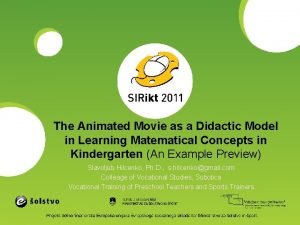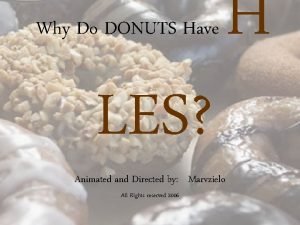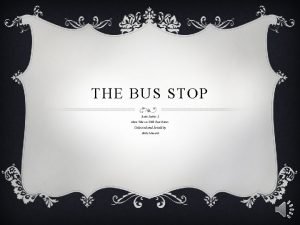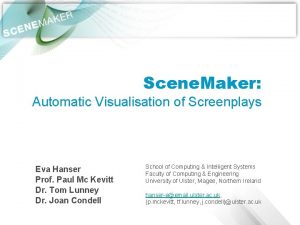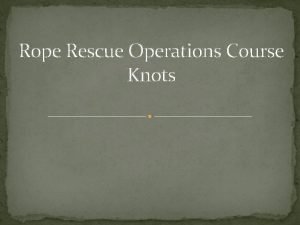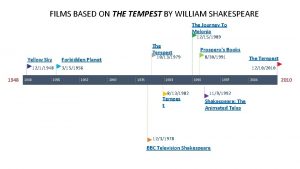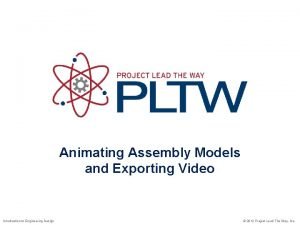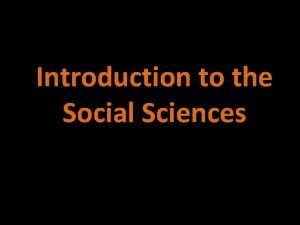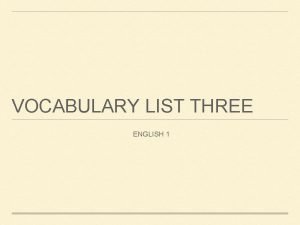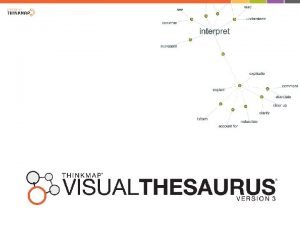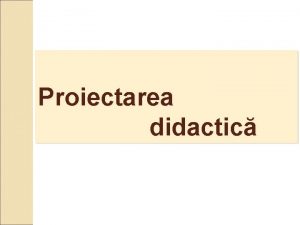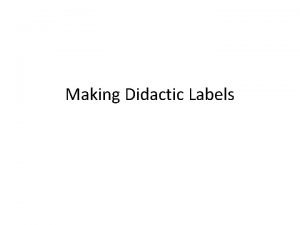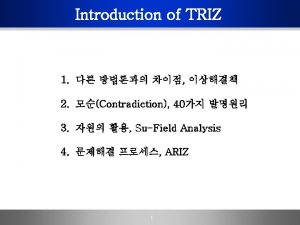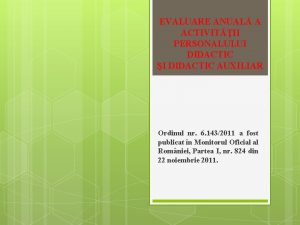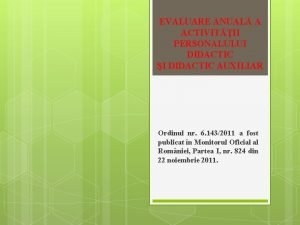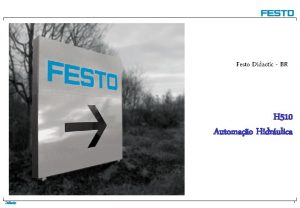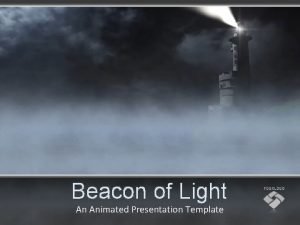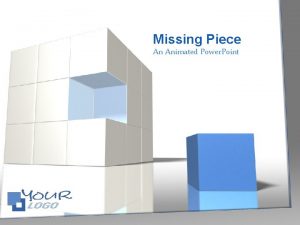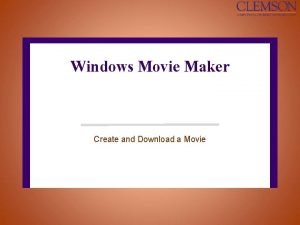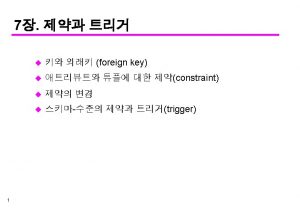The Animated Movie as a Didactic Model in

















- Slides: 17

The Animated Movie as a Didactic Model in Learning Matematical Concepts in Kindergarten (An Example Preview) Slavoljub Hilcenko, Ph. D. , s. hilcenko@gmail. com Colleage of Vocational Studies, Subotica Vocational Training of Preschool Teachers and Sports Trainers

The Animated Movie 1. ABOUT THE ANIMATED MOVIE AND THE QUIZ • Animated movies are made possible because of the sluggishness of our eyes, and with its expressive resources its limits are put as far as our imagination could go. In that sense, because its so appealing, attractive and familiar to children, we have “clothed” it for purposes of education and upbringing of preschoolers. 2

The Animated Movie • The model of the animated movie (picture no. 1) entitled “A dot, a line. . . ” has for its aim to simultaneously introduce various didactic variations in teachers’ work, to educate them to use the contemporary media and approaches to learning, and yet to provide an interactive learning tool that will encourage their functional thinking. 3

The Animated Movie • The plot of the movies is as follows: Stars up there in the sky are aligned in a line, and than variations of it follow, and so the line is, through various adventures, turned into a geometric shape such as: circle, square, a rectangular shape and a triangular shape, only to turn yet again to starts (dots) and there to light up the sky. 4

The Animated Movie (Picture no. 1. Shows the developmental process of the animated movie in Flash environment) 5

The Animated Movie • Namely, with its contents and its presentation layout (the animated movie in duration of 9 min + the interactive quiz) it offers an opportunity to preschool teachers for a more innovative, and yet independent and creative work into the basic notions of mathematical concepts (a dot, a line/ versions of it) and geometrical shapes (circle, square, rectangular and triangular shapes) and at the same time it allows children to master the input in a fun and effective way. 6

The Animated Movie • The process of assessment and learning is based on a simple principle, given and explained in the following example: • The usual and traditional question that we would give to children is as reads: “What is that, that is like a mushroom and lives in sea? , instead of, “What is that, that is like a mushroom and is always wet? ” (jellyfish) 7

The Animated Movie • This minor, but essentially a major difference in our approach (formulating the question), in our learning and assessment makes a gross but incomparable difference between pupils, who will only be able to reproduce their knowledge and those who are given to thinking (with associations, convergent and divergent thinking) and who have mastered the functional skills that are so necessary for threading through life. 8

The Animated Movie • According to this principle we have conceived our didactic model, the animated movie and the quiz (picture no. 2 and 3). Therefore, it is upon our preschool teachers to work out the system of questions for the activities of the very basic notions of mathematical concepts on the topic of: Geometrical figures (+ dot, line, variations of it). 9

The Animated Movie (Picture no. 2 Showing the sequence, how lines are formed of dots) 10

The Animated Movie 2. AN EXAMPLE OF HOW AN ANIMATED MOVIE, AS A DIDACTIC MODEL, HELPS FORM THE ACTIVITIES ON BASIC MATHEMATICAL NOTIONS • Our educational system “forces” a pupil to think exclusively in a convergent manner (= logical conclusions, solving the problem in only one possible way), while divergent thinking (= the creation of new relations, connections and ideas; sensations of contentment in the process of search for all the possible solutions of the given problem) cannot be found or any traces of it. 11

The Animated Movie 2. 1. PROCESS STEPS IN AN ACTIVITY THE INTRODUCTORY PART: In the introductory part of the activity we should perform a previously conceived and appropriated rhymed song where words are emphasized (concepts) that will be studied (1. “dot, lines, variations of it”, 2. “circle”, 3. “square”, 4. “rectangular shape” and 5. “triangular shape”) and in accordance to those we form groups (5) for the continuation of work. 12

The Animated Movie THE MAIN PART: The main part of the activity is made of two parts. 1. In the first part groups direct their attention to that part of the animated movie which bears the name of: example: “dot”, “square” and the like. • What follows is the viewing of the animated movie (= computer + video projector) and independent “research-like” work of children. • As those animated movies are interactive and can be paused or player at every new concept, whole groups (when asked by a preschool teacher during the process or upon one completion) respond orally, in a written form, by drawing, by manipulating with objects or some such way. Every group is allowed to add to their friends’ answers from different groups and etc. 13

The Animated Movie 2. The second part of an activity consists of practical work with the interactive quiz (picture no. 3). Way of formulating and graphically illustrating the questions (16) contributes to development of functional thinking processes in children. • This work can be achieved in already preformed groups (group problem solving), or individually or as a pair work (which depends on the number of computers). The quiz results are compared analysed. . . • The advantages of the given model of this quiz are shown in direct manipulation with animation (interactive tasks) that has an enormous impact and influence on effective computer-assisted learning. 14

The Animated Movie THE CONCLUDING PART: In the concluding part, children can be given a well prepared handouts for the occasion. • It can be noticed that all instructions and questions for the development of didactic models, that is, activities that are actualized through the animated movie, are not entirely concrete and open (educational objectives and aims, methods, approaches, materials, combination of modern IT tools and the traditional approaches etc. ), and its for a very good reason because it is a given space for preschool teacher’s creative output, who will bring about his/her own imprint into this approach to work. • 15

The Animated Movie (Picture no. 3. Shows an interactive task in the quiz with direct manipulation of animation) 16

The Animated Movie 3. CONCLUSION What is forthcoming is a broader implementation of our didactic model in learning through the animated movie into mainstream education and preschool institutions (kindergartens) across Serbia, so to gather more valid data of its quality and applicability. . . , and then we could even develop a complete system of this approach to learning. 17
 Didactic movie
Didactic movie How to use windows live movie maker
How to use windows live movie maker Animated doughnuts
Animated doughnuts Animated data flow diagram
Animated data flow diagram Bus stop story
Bus stop story Animated scene maker
Animated scene maker Animated knots double fisherman
Animated knots double fisherman Movie based on the tempest
Movie based on the tempest Animated assembly video
Animated assembly video Plant cell animated
Plant cell animated Animated liquid sunset
Animated liquid sunset Lce leaving cert
Lce leaving cert Outline of social science
Outline of social science Culmination adjective
Culmination adjective Typewriter keyboard finger placement chart
Typewriter keyboard finger placement chart Calculating percentage decrease
Calculating percentage decrease Visual thesaurus download
Visual thesaurus download Etapele unei lectii
Etapele unei lectii
